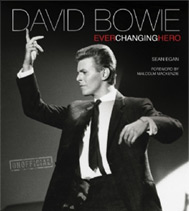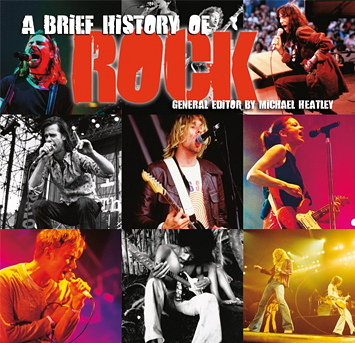The mandolin is a small, teardrop shaped, plucked stringed instrument. Its most famous form is the Neopolitan mandolin, beloved of all romantics for its use on Venetian gondolas. It is descended from the lute and, since its rejuvenation in the nineteenth century, has remained a popular and versatile instrument. Mandola The mandolin developed from the Italian ...
as cymbals, bass drums, triangles and Turkish crescents – became increasingly common in European bands. In domestic music, pianos started to replace harpsichords and clavichords, and the mandolin was very popular in Italy. Novelty instruments from this time included the glass armonica, barrel organ and music box. 1800–50 This era saw the culmination of Classicism, with ...
to the soaring melancholy of a ballad or the toe-tapping lilt of western swing. Alongside these staples stands a host of other instruments – from the piano, drums and mandolin to the dulcimer, washboard and harmonica – that have seen periods of popularity and decline during the ebb and flow of changing country styles. Banjo The banjo is a ...
, especially percussion instruments such as the piano, celeste, glockenspiel, xylophone, vibraphone, cimbalom and tubular bells and occasionally an organ, saxophone, guitar, mandolin, or ondes martenot. Since about 1950, non-western percussion instruments such as marimbas, tuned gongs, tom-toms and bubams have become increasingly common in orchestral music. Non-western melodic ...
Fiddles, generically, are bowed lutes. The term ‘fiddle’ denotes a stringed instrument with a neck, bearing strings that are sounded by the use of friction rather than plucking or striking. Playing the Fiddle In almost all fiddles the world over, friction is provided by a bow strung with rosined horsehair. The hair is tensioned by the springiness ...
it takes the role of a saz, oud or tambur in situations such as wedding bands where extra power and volume is necessary. Introduction | Stringed Instruments Instruments | Mandolin | Stringed ...
or her fingers and in direct touch with the strings – had room to explore beautiful, gentle improvizations, either as a solo performer or accompanying dance or song. Mandolin An off-shoot of the lute, the mandolin assumed its present-day eight-string form in early eighteenth-century Italy. The Gibson Guitar Company’s early 1920s introduction of the F-series mandolin, with ...
and dobro virtuoso Rob Ickes. Steffey went on to co-found the bluegrass band Mountain Heart. By 1999, Union Station included Bales, Ron Block, Dan Tyminski (vocals, mandolin, guitar, b. 1967) and Jerry Douglas (dobro, b. 1956). Banjoist Block, a former member of the Weary Hearts and the Lynn Morris Band, evolved into ...
trained to sing and play for chapel services and ‘occasional’ entertainments. The choice of instruments on offer to an aspiring performer was unusually varied and in Vivaldi’s time included the mandolin, chalumeau, the newly developing clarinet and the viola d’amore. During the first half of the eighteenth century the Pietà was able to field one of the best-disciplined orchestras ...
Few genres are as closely identified with one person as bluegrass is with Bill Monroe (vocals, mandolin, 1911–96). Monroe not only defined the style’s instrumentation, style and repertoire, he also hired most of its major figures and gave the music its name – taken from his group, The Blue Grass Boys. Kentucky Roots Raised on his ...
songwriting, a savvy mix of bluegrass and British folk-rock and the contrast between fizzy male vocals and melancholy female vocals. The band was founded by Jimmy Ryan (vocals, mandolin, b. 1959), guitarist Mark Spencer and Cheri Knight in Boston in 1987, but drifted apart in 1995. Ryan formed such bands as Wooden Leg, Sunday’s Well, ...
folk group Magna Carta. Johnstone was part of the band for three albums, during the recording of which he played a wide variety of instruments, including guitar, mandolin, sitar and dulcimer. Magna Carta producer Gus Dudgeon asked Johnstone to play on a self-titled 1970 solo album by a new artist, Bernie Taupin. Taupin’s collaborator, John ...
(Mandolin, b. 1945) Grisman was a city kid from New York who fell so deeply in love with the bluegrass music of Bill Monroe that he devoted himself to mastering his repertoire and his instrument, the mandolin. Grisman produced a record by his bluegrass heroes Frank Wakefield and Red Allen in 1963 and joined their band in 1966. But ...
(Vocals, mandolin, b. 1944) Doyle Lawson established a reputation as a terrific mandolinist in the style of his hero Bill Monroe during stints with J. D. Crowe And The New South (1966–71) and The Country Gentlemen (1972–79). But when the eastern Tennesseean started his own band, Doyle Lawson And Quicksilver, in 1979, he took bluegrass in ...
School Exhibition’, which combined old-time music and a spelling competition. After the Second World War, some of his sons and daughters, notably the brilliant fiddler Scotty (1932–73) and mandolin player Donna (b. 1934), played in The Bluegrass Champs, which developed into The Stonemans, featuring further siblings and ‘Pop’ Ernest himself. They made several albums and had their ...
AUTHORITATIVE
An extensive music information resource, bringing together the talents and expertise of a wide range of editors and musicologists, including Stanley Sadie, Charles Wilson, Paul Du Noyer, Tony Byworth, Bob Allen, Howard Mandel, Cliff Douse, William Schafer, John Wilson...
CURATED
Classical, Rock, Blues, Jazz, Country and more. Flame Tree has been making encyclopaedias and guides about music for over 20 years. Now Flame Tree Pro brings together a huge canon of carefully curated information on genres, styles, artists and instruments. It's a perfect tool for study, and entertaining too, a great companion to our music books.

David Bowie
Fantastic new, unofficial biography covers
his life, music, art and movies, with a
sweep of incredible photographs.


